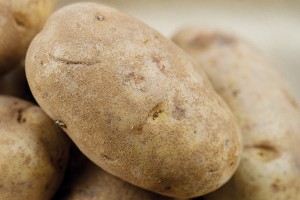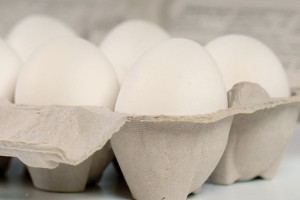You probably put food in your pantry, refrigerator and freezer without thinking twice about it. You’d be surprised to find out that maybe you’re refrigerating food that can be initially stored at room temperature, or that you’re leaving food on the counter when it needs to be kept cold.
Pantry, refrigerator and freezer conditions
How you choose to store food affects how long the food lasts. The University of Nebraska-Lincoln Extension explains the temperatures at which pantries, refrigerators and freezers should be kept for optimal food storage. Keeping a thermometer in both the refrigerator and freezer is recommended in order to keep an eye on temperatures.
Pantry
For dry and canned goods, a pantry’s temperature should fall between 50 degrees and 70 degrees Fahrenheit. Pantries should be clean, dark, dry and cool.
Use the “First in, first out” system for rotating dry and canned goods in your pantry to cut down on wasted product. Check dates regularly, and also inspect cans for signs of spoilage, such as cracks, bulges or leaks.
Refrigerator
Your refrigerator’s temperature should be between 34 degrees and 40 degrees Fahrenheit. There is no guarantee that because a food is refrigerated, it will last a long time.
Store foods in airtight containers, in foil, plastic wrap or bags instead of open containers. Spoilage microorganisms, enzymes and oxidation all cause food to deteriorate, even when the refrigerator’s temperature is maintained below 40 degrees.
Freezer
Keep your freezer’s temperature set at zero degrees Fahrenheit or below.
Foods stored in freezers will still lose color, texture, flavor, and nutritional quality, but they will not cause foodborne illness.
Recommended storage
The following is a list of 10 staples that households commonly have on hand.
Onions
Onions can be kept in the pantry for the first week after purchase. Then, they should be stored in the refrigerator for three to five days. Keep them away from potatoes, though; moisture and gases released from potatoes can make onions rot.
Potatoes
White and sweet potatoes should be stored at room temperature for a week, but can be kept at 50 to 60 degrees Fahrenheit for a month. According to Penn State University Extension, temperatures below 40 degrees causes starches in potatoes to turn to sugars, which changes their texture and flavor.
Tomatoes
According to Penn State University Extension, tomatoes can be kept at room temperature away from sunlight for three to five days while they are ripening. Then, when tomatoes are fully ripened, transfer them to the refrigerator.
Apples
Apples can be kept at room temperature for several days while they ripen before they have to be refrigerated. They can then be stored in the refrigerator for a month.
Eggs
Contrary to some beliefs, it is strongly recommended to store eggs in the coldest part of the refrigerator, whether you picked them up at the grocery store, your local farmer’s market or collected them from your backyard flock. For more information, read more about home-produced chicken eggs from Colorado State University Extension.
Coffee
Opened coffee can stay in the pantry for two to four weeks, but it will last for two months in the refrigerator. Instant coffee will last for a month at room temperature if opened. Refrigerating coffee and keeping it tightly sealed after opening is recommended, though.
Flour
Flour is considered semi-perishable. White flour can be kept in the pantry for a year, but whole or wheat flour should be stored in the refrigerator for six to eight months. Whole or wheat flour can also be put in the freezer for a year.
Bread
Bread will stay fresh in cool, dry pantries, according to Penn State University Extension. Bread will become stale more quickly if it is refrigerated, but refrigeration can slow down mold growth. Bread can also be frozen for two to three months.
The shelf life of bread depends on its ingredients. Store bought breads contain preservatives that stay fresh for longer, while homemade breads tend to mold quickly.
Peanut butter

Condiments
Refrigerating opened ketchup and yellow mustard will help the products last longer, but they can both be kept in the pantry for a certain period of time. OSU Extension recommends only keeping opened ketchup in the pantry for one month, while opened yellow mustard can be kept in the pantry for six to eight months. Unopened ketchup can be stored on the shelf for a year and unopened yellow mustard can stay in the pantry for two years.
More information
For more information about food storage, refer to:
- Ohio State University Extension’s Pantry Food Storage fact sheet
- University of Nebraska-Lincoln Extension’s Food Storage fact sheet
- Penn State University Extension: Shelf Storage at Room Temperature
Related
- Safely storing food and extending shelf life Jan. 21, 2014
- Miscues over ‘sell-by dates’ leads to consumer loss (Infographic) Jan. 16, 2014
- Use good judgment when buying produce Oct. 28, 2009













